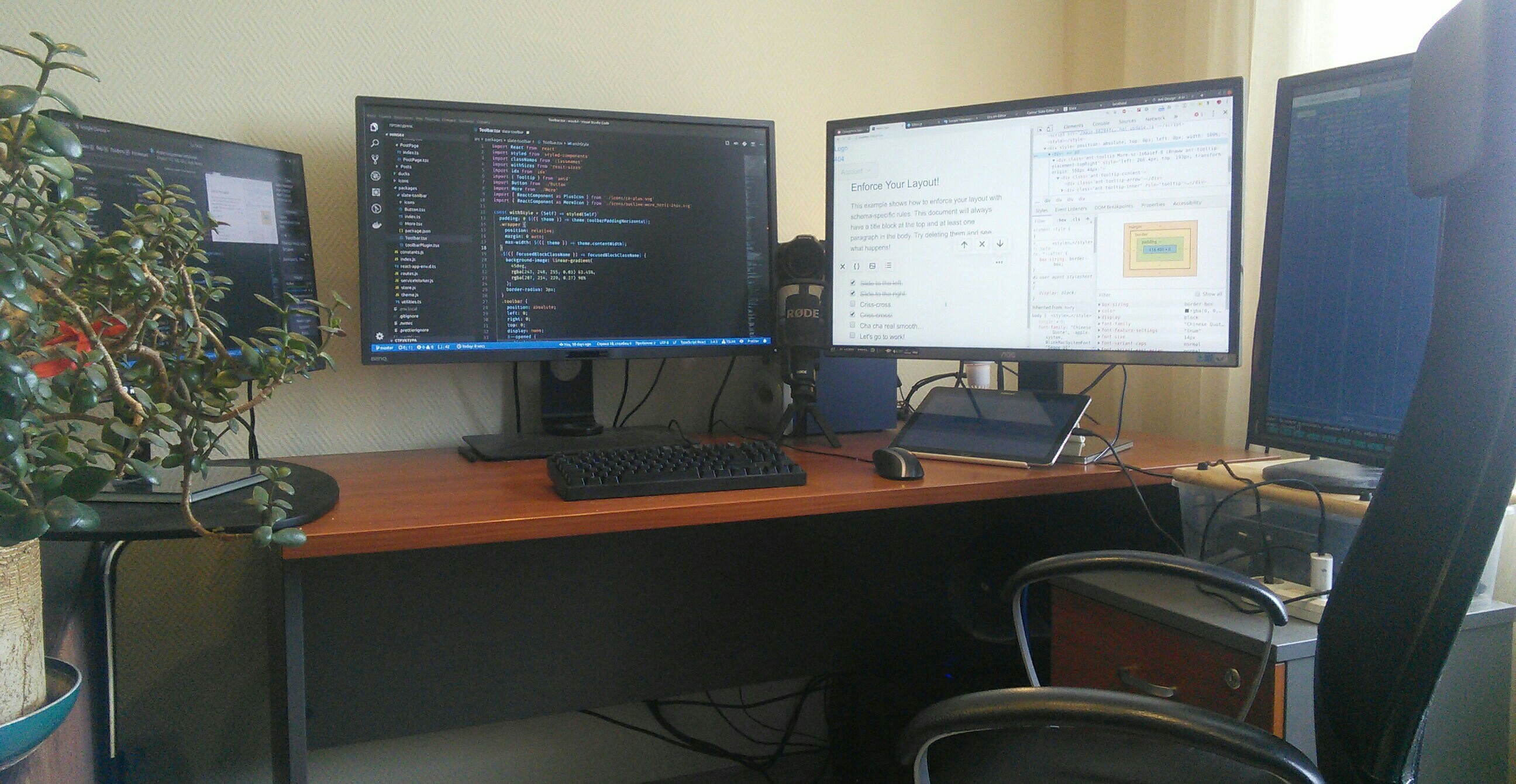About live-code after 130 streams
Four months ago, he took up the unicorn. Once again. And yet the soldier who does not strive for general's pants is bad.
First you need to prepare tools and materials. In our craft, this is the arrangement of the workplace, setting up the environment, the architecture of the project, the choice of libraries and connecting the API.
Of course I will post it in Open Source, which brings its obvious benefits. I also want streams - why? I did not answer for myself completely, but what are the successes on the points:
- I master the tools for the stream. YouTube creative studio and OBS Studio settings, manual assembly of libx265 for Ubuntu for 4K, tool for switching OBS Tablet Remote screens, a webcam reflex camera with ezcap287 video capture box, cardioid condenser microphone.
- I log my activities in different ways: releases on GitHub for each YouTube broadcast, Toggl, WakaTime, Trello. Measurements help to plan when running a long distance.I watched how the developers resist when customers require any accounting. But if "all by yourself" is another matter!
- Communication with imaginary viewers, among which my "alter ego", is like a pair of programming. Formulating a question is already half the solution, and I really like to talk. The feeling of sparing helps to move forward.
- Some part of the studies consists in research and reasoning, which are postponed in only one head. But now there is an opportunity to share a link to the stream, and to update yourself. Every speck of dust is a vitamin.
I liked it, I will continue. And I advise everyone to try. YouTube channel . "Subscribe, like". Turnip on GitHub .

Workplace streamer - find a cat.
